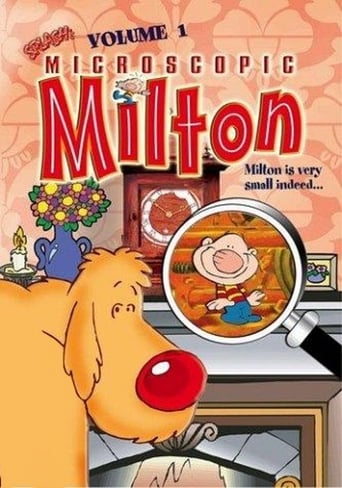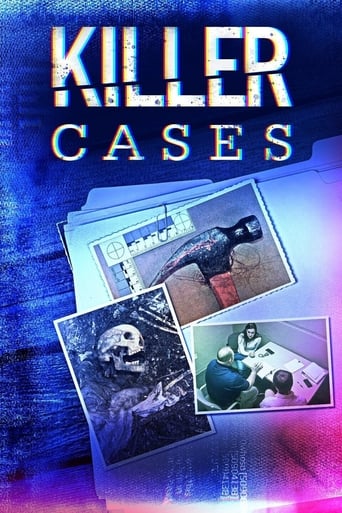










Tiny Mysteries from the Black Sea
When you think of mussels and clams and other bivalve animals, you might think of something as shelled and static, perhaps sitting on your plate at a fancy restaurant. But before the mussel got to your plate, it led a life—and all things considered, a surprisingly active one.
Writing:
Release Date:
Mon, Jun 24, 2019
Country: US
Language: En
Runtime: 10
Country: US
Language: En
Runtime: 10
Hank Green
Self - Host
Season 7:

If we were to write a fable to get this moral across, it would have to star the freshwater cnidarian called the hydra. Because in the hydra, the question of butts connects to the ambiguities of immortality, which in turn relates to the befuddling matter of sexual reproduction.

Oomycetes are one of the more unusual-looking microbes we’ve seen in the microcosmos. It looks more like a coral reef painted by an artist inspired by Gustav Klimt and a pile of trash. And if you saw that painting hanging in the museum, you might pass it by without thinking much of its subject.

The microcosmos is home to many unusual partnerships. Life is, after all, just relationships, each of which build upon one another like strokes of paint in an epic tableau of ecology, epidemics, and yogurt?

There’s a few things that give Beggiatoa away. The first is the simple serpentine shape of their bodies, and the second are those little dots inside of them. They look like bubbles, but they’re actually sulfur granules.

A little while ago, James found himself with a bit of a problem. He was keeping some wheat grains at home to use as food for the microbes that he cultures and films for our enjoyment. But before he could feed the grains to his microbes, they became infested with the larvae.. of moths.

When you hear the phrase “brain-eating amoebas,” is there a particular image that comes to mind? Whatever you envision, it's probably not what the notorious brain-eating amoeba that strikes fear in our hearts actually looks like.

Usually we’re looking into pond water or whatever other fascinating bit of nature that James, our master of microscopes, usually looks at. But right now, our sights are coming to us directly from the kitchen and from a different master of microscopes.

Under the microscope, mosquitos undergo a metamorphosis sculpted in gold. The buzzing body takes on a life of its own, its usual role as menace lying far beyond the margins of the screen.

This video is all about James, who many of you know as our master of microscopes. He is the scientist, and the artist, behind just about everything we are able to see in our collective journey through the microcosmos.

When was the last time you saw a puddle? Was it recent—perhaps some time in the past week, fresh from a downpour? Or has it been a long time since you’ve seen rain, and so an even longer time since your path has crossed a puddle?

One of the spectacular details of animals in our world is just how varied their colors can be. When you look at birds, for example, you’ll see everything from mundane grays to iridescent blues. So why don’t we shine with the same iridescence of birds?

When you think of bees, you probably don’t think of single-celled eukaryotes. What could an insect have in common with, say, a ciliate?

When you think of bees, you probably don’t think of single-celled eukaryotes. What could an insect have in common with, say, a ciliate?

An ambiguously long time ago, there was this theory of medicine. An idea that if you came across a plant that looked like a body part, that meant it was meant to treat ailments that targeted said part. And this put a lot of pressure on liverwort, simply because it resembled the liver.

In the 1820s, a man named Dr. R. Brandes walked through a meadow on a quest to try and answer a centuries-old question about a mysterious gelatinous substance on the ground known as “star jelly.”

Our master of microscopes is always looking for rare ciliates that live in areas low in oxygen. But when he puts those samples under a growth light, his tubes quickly turn the color of the green sulfur bacteria that thrive in those anaerobic conditions.

In the middle of the 19th century, a scientist stared into the microscope and found, staring back at him, a vampire.

Of all the animals that we’ve examined in the microcosmos, leeches are probably one of the few that can be used as a verb, to leech off someone—to take and take from them, like a worm consuming someone’s blood.

If you have been following Journey to the Microcosmos for some time, this might sound like a familiar story.| Consider this a proper slasher movie sequel.

Can life be created spontaneously? Well, a year and a half ago, our master of microscopes, James, was inspired by the idea of spontaneous generation and set up his own little experiment.

We Found Some Things We Can't Explain Today's episode has one particular theme: a bunch of funny things going on in the microcosmos.

Imagine that you aren’t watching the microcosmos right now. Instead you’re living in the world as it existed around one billion years ago, and you are the ancestor of this red algae.

In the northeast Atlantic Ocean, plankton populations aren’t looking like they used to. And at the center of it all are tiny, photosynthetic bacteria called picocyanobacteria who may just outlast us all.

We don’t know if there are many rites of passage institutionalized among amateur microscopists. But we have to imagine that, as people find themselves navigating the microcosmos for the first time, they’re often on the lookout for tardigrades.

When you think of kombucha, you might think of a nice, refreshing, healthy drink, one that’s exceptionall good for your microbiome. What we here at Journey to the Microcosmos think of is a terrarium…a place where a whole ecosystem exists, trapped in glass.

After an absence of almost 90 years, we’ve found a rare ciliate last written about about in 1933.

In the microcosmos—where the organisms vastly outnumber us, where what we find in a single pool of water can change from day to day—it makes us as what it mean for a microbe to be rare?

One of the fascinating aspects of microscopy is the way you can look so deeply into something that it becomes unrecognizable. What could look like a stained glass window could actually turn out to be... a hopping shrimp?

It’s hard to count how many times we’ve encountered diatoms on Journey to the Microcosmos. However, we've always talked about the more colorful variety of diatom, and not the ones that are colorless.

If you’ve clicked on this video, we assume it’s because you read the title, “We fed our microbes blood so you don’t have to,” and immediately asked the question everyone asks when a youtuber says they did something so you don’t have to: but why?

If you were asked to describe what a sea slug is, you might be tempted to go with the straightforward response: it’s a slug that lives in the sea. And you know, you wouldn’t be wrong.

Usually on Journey to the Microcosmos, we spend our time delving into the microscopic world and the surprising things that microbes have to teach us. But today, we would like to talk about Hank Green, and what was his cancer.

Today James, our master of microscopes, is using a microscopy slide as a cutting board, chopping away at the slide to end up with a bunch of individual stentors.

This amoeba has a shell around it, which seems like a pretty good idea. The world at large is full of predators, and shells seem like a straightforward strategy to ward those predators off. But what if this amoeba’s shell wasn’t just a form of protection? What if it was actually dangerous?

Sometimes, the microcosmos can take a little while to surprise. You have to be patient, enjoying the familiar sights as you wait for something new.

We know that it’s bad form to return to the same word over and over again here on Journey to the Microcosmos. But whenever we write about amoeba, we will probably say the word “blob” a lot.

When James, our master of microscopes, was looking through samples he’d received from Spain, he didn’t expect to see this—a creature straight out of a horror movie, with dark reddish brown eyes and tentacles streaming out of its mouth.

When you think of mussels and clams and other bivalve animals, you might think of something as shelled and static, perhaps sitting on your plate at a fancy restaurant. But before the mussel got to your plate, it led a life—and all things considered, a surprisingly active one.

Our Master of Microscopes James was fascinated by something he found in some samples he had been given from Portugal. Something that would lead us to a kraken in the microcosmos…but how?

We Spent a Year Looking at Microbes in a Polish Pond Have you ever wondered what seasons look like to a microbe? How they navigate the highs, the lows, and all the muddy, slushy in-betweens?

For James, our master of microscopes, the immense breadth has made ciliates a bit of an obsession. Whether he’s hunting down a rare species, or documenting the behavior of something more familiar, there’s always something spectacular in this group.

We’re focusing today on a Journey to the Microcosmos favorite: the ciliates, the single-celled eukaryotes covered in hair-like structures called cilia. We want to be more self-centered and explore what ciliates have taught us about ourselves.

James, our master of microscopes, seems like a tough person to get a gift for. What do you get the person who has the entirety of the microcosmos available to him with just a glimpse through a lens?

Flatworms are kind of adorable. And they have keep scientists up at night for a few reasons.

Whenever we get to watch things through the microscope together, it’s like we’re transported to another world—or maybe another universe, or dimension. Time and space feel off somehow, with sights that are slower and faster and nearer and farther all at once.

One thing we’ve heard from many of you is that this show is your sleep show, that soothing bit of media you put on when you need to slow down your brain and drift off. We take that as a huge compliment. It’s nice to know we can be a part of your relaxation journey.

While our journey through the microcosmos together is soon coming to a close, we know that some of you still have questions…questions that we wanted to take this last opportunity to explore.

Science is about more than just finding immutable laws of nature. It’s about having the imagination to try things and ask questions that might not necessarily lead anywhere, but that just… feel right.

People have been staring through the microscope for centuries, peering into the microcosmos and uncovering its beauty as they pursue deeper questions about the world around us. This is our series finale, and we want to thank you all from the bottom of our hearts for coming on this journey with us. It has been such a privilege to be a part of such a wonderful community, and we can't wait to join you all on your journeys ahead.




















